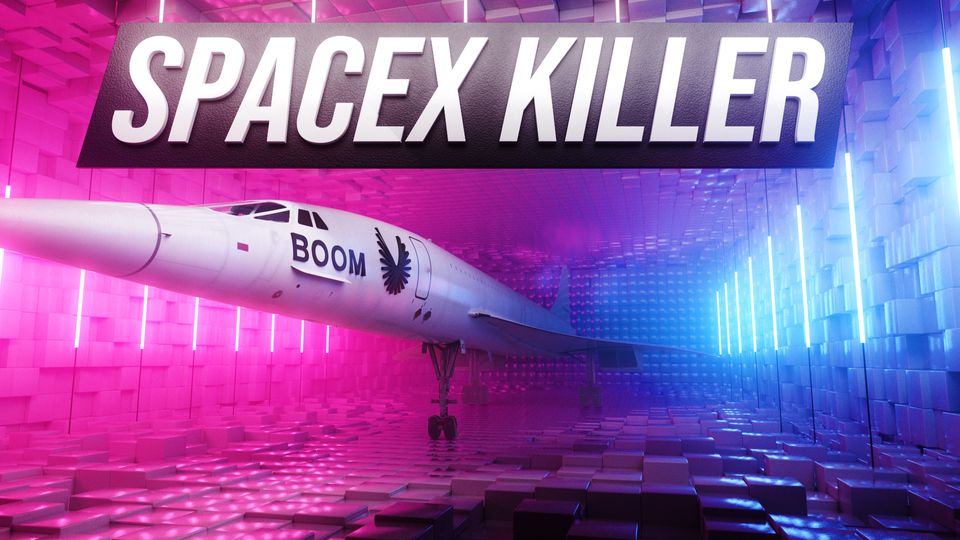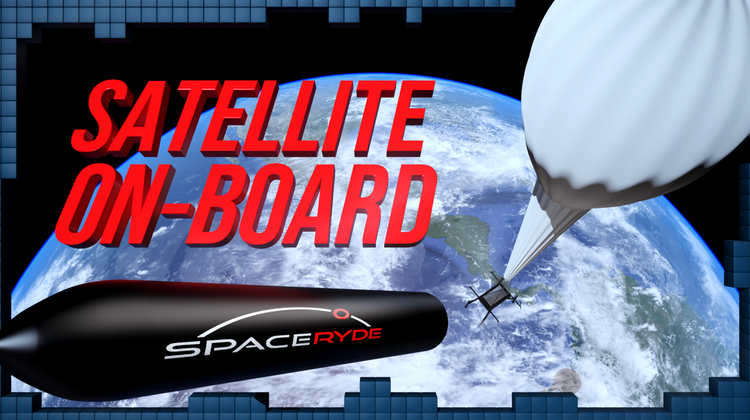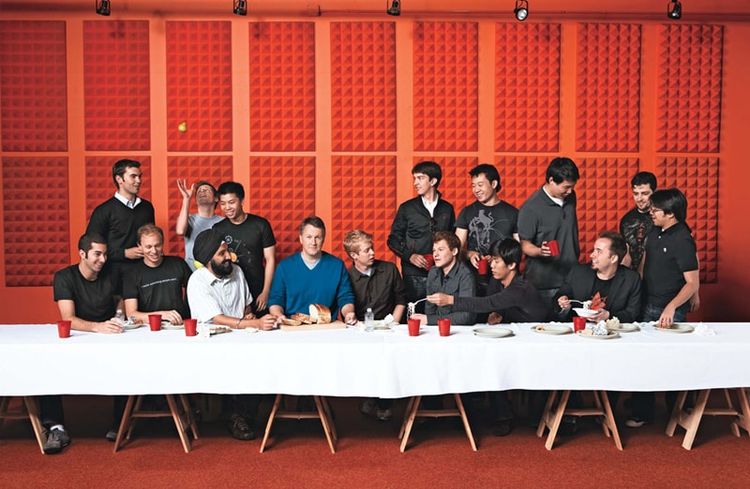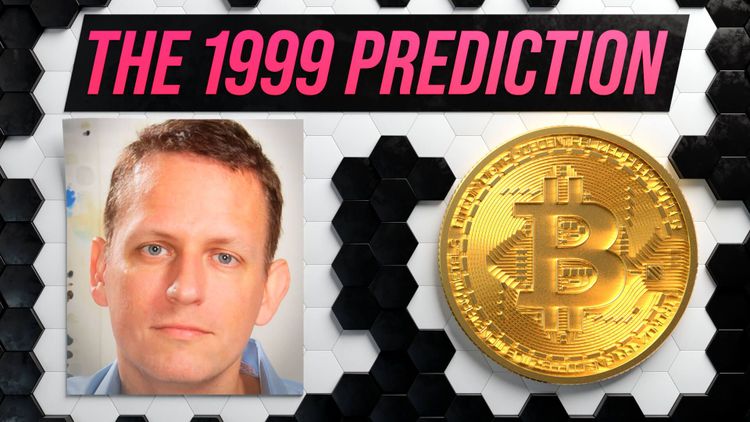Can Boom Supersonic Succeed Where The Concorde Failed?

The new plane from Boom Supersonic travels at speeds well over 1,000 miles per hour.
To put that into perspective, a Tesla travels at 200 miles per hour, a bullet train at 350 miles per hour, and a subsonic plane at 550 miles per hour.
The only faster way to get around might be using a SpaceX rocket, but Elon’s plan for that is still completely untested.
Supersonic planes have a complicated history dating back to the 1960s, but to understand Boom Supersonic, you first need to understand its founder, Blake Scholl.
Who Is Boom Supersonic’s Founder, Blake Scholl?
Blake Scholl is on a mission to bring supersonic travel to the masses, and he’s making solid progress.
In just five years, he's raised hundreds of millions of dollars, hired dozens of engineers, and built a working prototype called XB-1 that can travel at Mach 2.2.
It’s impressive progress, but the most impressive part is that he had zero experience in the aerospace industry.
So how has he done it?
Even though Blake doesn’t have an aerospace background, he is an engineer by training. He studied computer science in college and then went to work for Amazon back in 2001. While there, he built an automated system that would buy Google ads for Amazon products.
To put it in his words, this system “ turned into a $300 million P&L by the time I was 24”
Joining a high-growth startup like Amazon in the early days is one of the best ways to accelerate your career. No big company would hire a 24-year-old to manage a $300 million piece of their business, but by joining a risky venture, Blake developed management skills that helped make Boom a reality later on.
After a few years at Amazon, Blake wanted to start his own company, so he launched an app called Barcode Hero. The purpose of the app was to provide consumers with price insights while they were shopping, or as he puts it, “Barcode Hero, is a community where people can share recommendations about everyday and unique products to identify, surface, and reward experts in the community.”
In a 2020 podcast interview, Blake describes Barcode Hero’s philosophy:
Barcode Hero lets you zap a product barcode with your phone to find a competitor’s pricing, share your thoughts or recommendations, even create Christmas wish lists just in time for the holidays. - Blake Scholl
The app received positive reviews and grew steadily, but mobile commerce was an extremely competitive market back in 2010. It’s now ubiquitous for startups to spend years entirely focused on building a great product before trying to make money, but back then, questions about profitability popped up much earlier.
So in 2012, Groupon acquired Blake’s company for an undisclosed sum and shut down Barcode Hero. It doesn’t look like it was an amazing outcome, but Blake wasn’t deterred. He wanted to go bigger with his next startup, and so he set his sights higher, literally.
Blake Scholl’s Mission To Achieve Supersonic Flight
Blake had been flying planes since he was in college and always dreamt of having a tangible impact on aviation. He didn’t have the perfect resume to start a company that builds airplanes, but that didn’t bother him. After all, the Wright Brothers had only built bicycles before they made the first airplane. And Elon Musk was running a payments company before launching SpaceX.
So Blake founded Boom Supersonic and began building a team around the idea of safe and sustainable high-speed travel.
One of the first major milestones for the company was joining the startup accelerator Y Combinator. Although YC is typically known for funding software startups like Airbnb, Stripe, and Coinbase, the partners at Y Combinator love all ambitious entrepreneurs.
Building physical things is usually much harder than writing software. There are long research and development cycles, expensive manufacturing bills, and plenty of regulatory hurdles. But Blake developed an interesting method for overcoming these challenges. He says, “At Boom, we believe that life happens in person and that real face time beats FaceTime.”
Blake is obsessed with the idea that in-person interactions are inherently more valuable than conversations over the phone or email.
And he really lives this mantra. Y Combinator’s Demo Day was quickly approaching, and Blake was going to have to present Boom to a huge group of investors. He needed to demonstrate that airlines would actually buy the supersonic planes he was going to build. Emails and phone calls to airlines were going nowhere, so he decided to hop on a plane and get some face time with Richard Branson. Virgin Galactic was rolling out a new Spaceship, and Blake knew that this was an incredible opportunity.
So Bake decided to take matters into his own hands and find a way to meet with Branson.
We ended up crashing the rollout! I never got my name on the invite list, but we got our 15 minutes with Richard Branson. We’re not asking you to invest in the company; we’re asking if when the airplane is delivered whether you would like the first few with the Virgin logo on the tail. - Blake Scholl
This was a massive moment for the company. Everyone knows Richard Branson and Virgin airlines, so overnight, Boom became much more legitimate in the eyes of investors. Most importantly, Virgin didn’t have to spend any money upfront, so it was easy to get the deal approved.
I was actually at the YC Demo Day where Blake first presented Boom to investors, and the reaction was pretty amazing. It was instantly clear that everyone loved the idea and couldn’t wait to invest.
None of the airplane specifications had been decided yet; after all, the company was still brand new. But Blake had a clear vision for what would be most important to airlines. Speed, Safety, and Sustainability.
These might seem like vague marketing terms, but they are highly calculated based on the previous failures of supersonic development. To understand why Blake focuses on these particular values, we have to go back to 1969.
The History Of Supersonic Flight
America had just landed a man on the moon, and the first commercial supersonic airplane was about to take flight. It was the Concorde, and it had a lot in common with Boom’s new aircraft.
On the Concorde, a trip from New York to London took just over three hours, and it felt like the dawn of an entirely new age. Throughout human history, increases in the speed of transport have had remarkable second-order effects. In the 1840s, traveling across the United States required traveling in a covered wagon. The journey took months, and people often died in transit.
But in 1869, the transcontinental railroad shortened that trip to just 83 hours. America went through a remarkable period of growth as people migrated westward.
And in the 1930s, transcontinental airlines began moving Americans across the country in just 20 hours. A few decades later, jet engines cut that time down to just 6 hours, and travel exploded.
The jet age affected culture in remarkable ways. The Beatles were able to go on the first world tour and become an international sensation, and Major League Baseball became a national sport played all over the United States. It’s always hard to predict the effects of faster travel, but throughout history, great things always happen when we start moving faster.
The Concorde promised to make international travel dramatically more accessible, but there were a ton of problems, and most of them come back to speed, safety, and sustainability.
Speed was obviously the main selling point of the Concorde. Business travelers value their time extremely highly and are willing to pay lots of money to save time, but it’s also just cool to go fast. And celebrities loved how fast the Concorde went.
Why Did The Concorde Fail?
1. Heat
Traveling at Mach 2 can cause some real issues. The first of which is heat. The Concorde went so fast that the plane would heat up substantially. The entire fuselage had to be coated in highly reflective white paint to deflect as much light as possible.
One Concorde was painted blue during a promotion for Pepsi and could only stay at Mach 2 for 20 minutes because of heat build-up!
The Concorde was built before computer simulation allowed engineers to test performance in virtual environments, so many of these issues had to be worked out through painstaking experiments. But Boom is building their planes using the latest software tools.
2. Fuel
The second issue was fuel. You would expect a plane that goes twice as fast to use twice as much fuel. But the Concorde used more than five times as much fuel as modern commercial airliners. This meant that tickets had to be extremely expensive to offset the cost of fuel and every trip came with significant carbon emissions.
Boom is leveraging advances in engine design that yield greater fuel efficiency, which will mean cheaper ticket prices. But they aren’t stopping there. Boom plans to use fuel made from carbon removed from the atmosphere, meaning that supersonic travel will be carbon neutral from day one.
Increased fuel efficiency won’t just make New York to London trips more affordable, though. It will open up entirely new routes. The Concorde could never fly across the pacific, but Boom has planned to offer service from San Francisco to Tokyo since day one. This new route will expand the market for these planes and give Boom a better chance at success.
Blake also thinks about pricing differently than the executives who ran the Concorde project. He wants to continually bring prices down until you can get anywhere in the world for just a hundred bucks. But the Concorde executives were much more focused on short-term profitability. British Airways and Air France performed market research to inform their pricing strategy. People generally thought of the Concorde as extremely expensive, so they raised prices to match expectations!
3. Safety
A high price tag is fine when your customer is a wealthy business traveler, but if you’re catering to rich people, you need to have a perfect safety record, and safety is what did the Concorde in. Shortly after the turn of the millennium, Air France Flight 4590 crashed during takeoff and killed everyone on board. The plane had run over a piece of debris on the runway and ruptured a tire. It destroyed the Concorde’s reputation and grounded the entire fleet for months.
One year later, the September 11th terrorist attacks crushed the entire airline industry and forced the Concorde into retirement shortly after.
But Boom is learning from all of this. Airplane safety protocols have advanced significantly in the past two decades, and the problem with the Concorde’s tires has been thoroughly investigated.
Many of the safety issues with the Concorde resulted from the fact that the project engineers had a goal of delivering a supersonic plane at essentially any cost. The original budget for the Concorde was 70 million, but the project wound up costing more than a billion.
Engineers had to make lots of compromises to get the Concorde to work. One of which was the nose of the airplane. Because the plane landed at such a steep angle, the pilots couldn’t see the runway as they approached. So the entire nose cone of the aircraft would tilt down during landing. Boom just installed a camera on the front of the plane.
As Blake says,
There’s a camera toggle button you can hit, and it flips over, and you get all your flight controls overlaid on top of what is a virtual window through the nose of the airplane. So you get better runway visibility that you get with a traditional subsonic cockpit. - Blake Scholl
This simple solution significantly reduces complexity and creates tremendous benefits for pilots.
4. Price
Another issue that plagued the Concorde was that it required a flight engineer to be onboard during every flight. Essentially, the plane was so complex that a trained expert had to sit in the cockpit with the pilots just to ensure everything went smoothly. This created a ton of extra cost, and even with the flight engineer, most airlines still had to have an extra Concorde sitting on standby at all times. This was because customers were so demanding that no airline could afford to frustrate customers with delays if there were maintenance issues.
Boom is building for reliability from day one, and by simplifying the design of the plane and using software solutions wherever possible, they should be able to avoid many of the pitfalls that the Concorde faced.
5. Noise
Lastly, there’s the issue of noise. The fact that Blake named his company Boom is pretty funny since the sonic boom was one of the major issues with Concorde. Sonic booms are so powerful that they can break windows in houses below, and for that reason, the United States has put a speed limit on aircraft traveling over the country. But NASA engineers are working on solving the issue of the sonic boom as well.
It’s unlikely that they will ever be able to muffle the noise entirely, but there’s a good chance that engineers could lower the boom from 105 decibels to just 70 decibels. At that volume, US lawmakers might revisit the speed limit if it means getting from California to Washington DC in half the time.
Strict regulation is just one of many factors that have led to stagnation in the aerospace industry, and prominent investors like Peter Thiel have been calling for America to address this for years now. Thiel states,
I often think it's worth looking at quantity, not quality, and we're not going faster. You know the Concorde was decommissioned in 2003, and if you include low-tech airport security mechanisms, we're back to about 1960 type travel speeds today in the US. - Peter Thiel
Part of the problem with the Concorde was that, ultimately, it was a vanity project by the UK and French governments. They had amazing engineers working on the technology, but they never had a strong economic model. But Boom is thinking of the business model from day one, and they already have signed contracts with airlines. Only 14 Concordes ever saw commercial service, but United Airlines has already committed to buying 20 planes from Boom.
Will Boom Succeed?
Boom has some strong competition. Subsonic planes are getting faster and more efficient. It’s also possible to have a more productive flight on a traditional plane now that you can use the WiFi to get some work done or sleep in a lie-flat seat in first class.
There are also other companies working on developing supersonic planes, like Spike Aerospace and Aerion Supersonic, although Aerion recently went out of business.
But I think Boom’s real competition will come from outside the traditional airline industry. Several companies are working on planes capable of vertical takeoff and landing, which could change how we travel, even if everything is still subsonic. A considerable amount of any trip is spent just getting to and from the airport, and these new VTOL aircraft will make it much easier to get to smaller airports.
Then there’s SpaceX’s point-to-point. Elon Musk thinks he can get passengers from New York to Tokyo in just 30 minutes using a rocket. This is clearly a long shot, but if it works, it would be substantially faster than flying in a supersonic plane.
Lastly, we can’t forget about the exponential growth of the internet. Every year, internet speeds get faster and more people to get connected. Video conferencing just saw a massive surge in adoption during the pandemic, and people are more comfortable doing business remotely now. Virtual reality is still in its infancy, but Facebook is working hard to make communication in VR indistinguishable from reality. This is all part of a larger initiative to build what people are calling a “metaverse”, but that’s a topic for another post.
This post is also available as a YouTube video:




